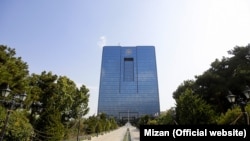With the rial, Iranian's national currency, recently setting a new low record against the U.S. dollar, the Governor of the Central Bank of Iran (CBI), Abdol-Nasser Hemmati, says that, along with "heavily injecting" foreign currencies into the local forex market (NIMA), the bank has permitted the petrochemical, steel, and mineral conglomerates to sell their forex income from exports to the authorized exchange bureaus.
Before the new decision, the giant corporations were only allowed to sell their collected forex to the bank's bureaus.
The price of the U.S. dollar in the Iranian open market has reached about 270,000 rials. At the beginning of the current Iranian calendar year (beginning March 20), the dollar's price was 160,000, but at the end of July, it reached 250,000 rials.
In the last week leading up to July, the CBI injected about one billion dollars of foreign currencies into the market, and the price of the dollar fell to 210,000 rials. Still, after a while, the exchange rate began to fluctuate again, and the dollar resumed its soaring trend.
On his Instagram page on Wednesday, Hemmati disclosed the CBI's plan to "increase foreign exchange injections into the market" and issue licenses to some major exporters to offer their foreign currencies to authorized exchange bureaus.
As Hemmati claimed, "It seems that the recent fluctuations in the Iranian forex market are the outcome of Washington's propaganda about ending all its sanctions' waivers and activating the trigger mechanism."
The trigger mechanism is a function of the 2015 Iranian nuclear deal, designed to reinstate all UN sanctions against Iran, which Washington activated last month. U.S. Secretary of State, Mike Pompeo, announced on August 27 that the United States had begun a thirty-day process to reinstate all UN sanctions against Iran, following the U.S.' failure at the U.N. Security Council (UNSC) to extend the Iranian arms embargo.
Based on Washington's new decision, all international sanctions against Iran will be reinstated from September 20 onward.
Hemmati did not specify exactly how much currency the CBI intends to inject into the market. Still, last week he announced that fifteen billion dollars had already been injected into the local market in the past five months.
According to data provided by the Islamic Republic's Customs, Iran's imports in the first five months of the Iranian calendar year were $13.7 billion, and the country's non-oil exports were $10.9 billion.
Hemmati blamed "inflammation in the market" for the rial's downfall and advised people not to expose their capital to the "risky" forex market, saying that the CBI would "heavily supply" forex to the local market while also claiming that "exchange rates in the market are not economic rates and will not last."
Hemmati previously maintained that Iran's foreign exchange market was bubbling, and foreign exchange rates will fall. Nevertheless, since the beginning of the current Iranian year (March 20, 2020,) the dollar's value has risen by about 70% against the rial.






